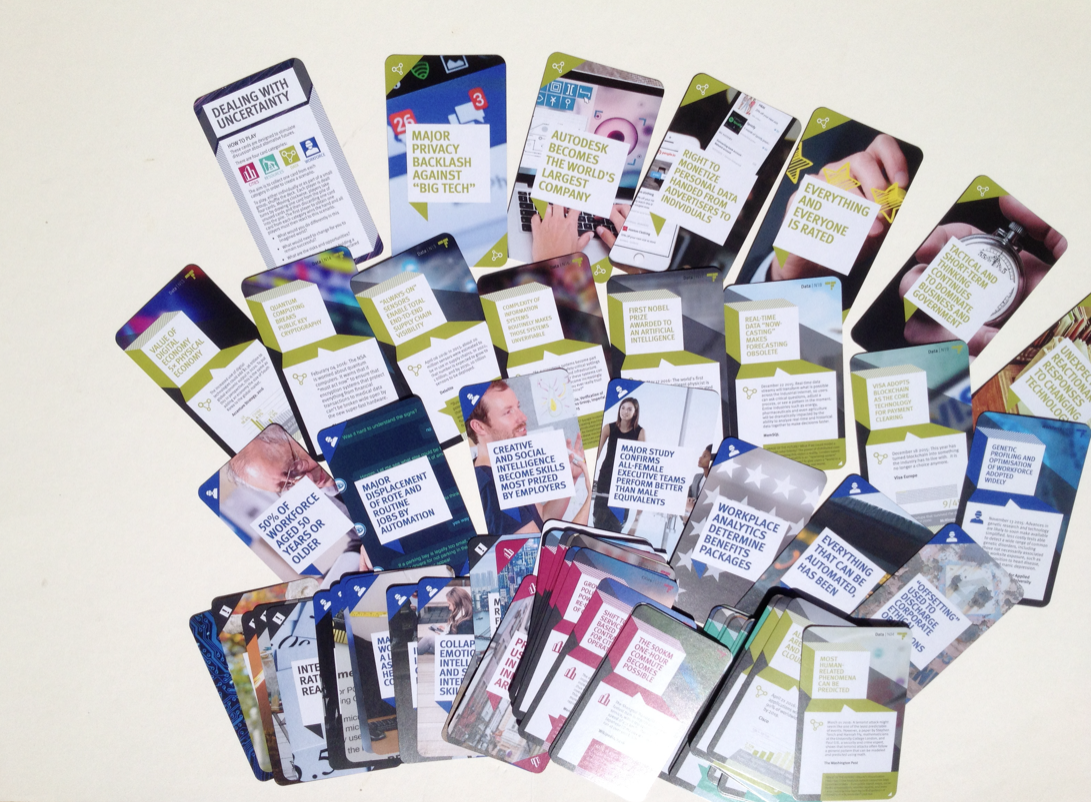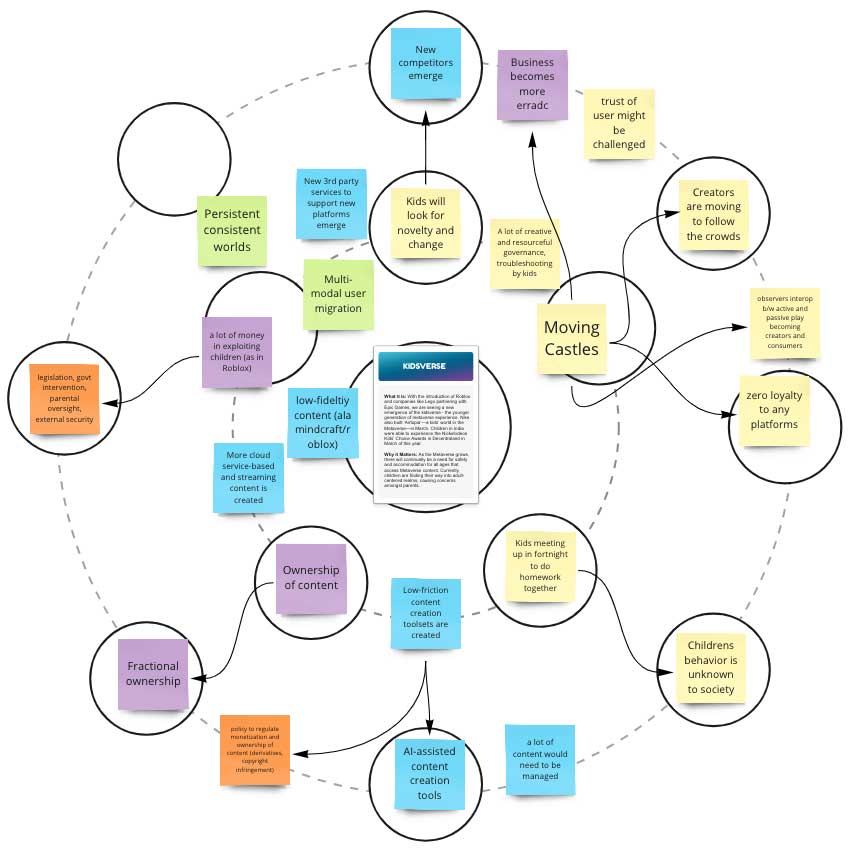How To Develop Futures Intelligence Using Trends
How To Develop Futures Intelligence Using Trends

Trends are one of the most popular tools companies use to engage their audience and create hype. Trends in technology, design, business, policy, and even AI are shaping our world through driving forces that collide, mesh, and transform the way we live and work. In many cases, businesses often consume these trends, discuss them, and then move on.
We see there is a bigger opportunity to activate trends in everyday work and use this data as more than a water cooler discussion or fad of the month. Trends can harness the power to help direct strategies and scenarios for the future by being used in strategic foresight work. Relevant and prioritized trends can serve as the basis for us to develop new knowledge and intelligence about the future that stimulate imagination and transform understanding.
What are general problems of using trends?
As exciting as they might appear, trends have one distinct problem. Once they are realized and discussed in public, such as in trend reports, they have already gone mainstream. Their lifecycle and knowledge are exposed to others to capitalize on, which makes trends more difficult to actualize strategically. New trends can also be misleading if they are not discussed in relation to human values and implications. Often, we might see a list of tech trends as a way to understand the future. However, technology as a future does not live in isolation. Tech lives with people’s emotions, needs, desires, and culture within that trend. Trends can also be misleading if the business team or those presenting them show just one dimension of trends without looking at other points of origin such as environmental, economic, political, or social stances.
How can we use trends more effectively?
There are a number of ways to use trends for businesses and move away from passive reading and citation. Trends can be developed into tools such as trend cards or used as means to come up with trend patterns or themes. Trends can also be investigated and used for critical thinking exercises, such as understanding their deep implications. In this way, we can uncover opportunities and threats of trends that may occur in the near or further future. The business can also prioritize trends to concentrate on what matters most and what is most likely to have an impact on the business. In this way, companies can work with trends as fuel for strategy. One common path teams can take is to conduct a workshop to explore trends and their vast implications using the implications wheels.
Using the Implications Wheels to explore trends
The Implications Wheels is a strategic foresight method that helps companies discover important implications of trends, unpack trend themes, or explore emerging issues (weak signals) in the space. To start, it begins with placing the trend at the center and offering insight into that trend, such as 1) what’s happening and 2) why it matters. Baked into the trend are important value shifts and implications that bring the trend to life. Outside the trends are other bubbles that present the manifesting implications. The first set of circles has first-order implications, while the second set has second-order implications, and so on. Prompting discussion of “what might happen” sets the stage for future possibilities and new emergence within this exercise.

Implications Wheels used during a virtual workshop
Nullam cursus lacinia erat
Through our experience of doing this exercise many times with clients, groups generally come up with predictable implications in the first-order, but as they move more to the outside circles, crazier and more imaginative ideas emerge. It’s in these areas that novelty occurs. Once the board is filled out entirely, teams can discuss the outputs and also assess threats and opportunities that span across the circles. Another way to perform this exercise is to create the Implications Wheels across the model of STEEP. In this way, you ensure an even more holistic view of the meta-landscapes of change.
Ways to generate new knowledge with the Implications Wheels
Once the implications wheels are filled out, teams can review future intelligence and identify opportunities and threats. Participants can also take the data and build transformational scenarios or stories of the future. Part of this scenario development should incorporate scenario archetypes to enrich a more holistic view of the narrative. Building stories helps shape trends, values, and implications together in a rich setting that develops a new understanding of what that future can look like. At the heart, it reveals alternative possibilities and ways we might avoid or embrace aspects of the future early on.
Conclusion
Discovering trends and using the implications wheels are practical exercises that many businesses can conduct to build a better understanding of the environmental landscape and strategy. The use of these tools can also set the stage for gaining multiple perspectives of insight from various stakeholders and audiences. Arguably, one of the most powerful parts of engaging teams in critical implications is deepening the learning around how certain information collides and meshes together. In this manner, new emergence happens that helps teams see what new possibilities can arrive in the future. These possibilities thereafter set a new stage for opportunities and new innovation to occur and be realized.
